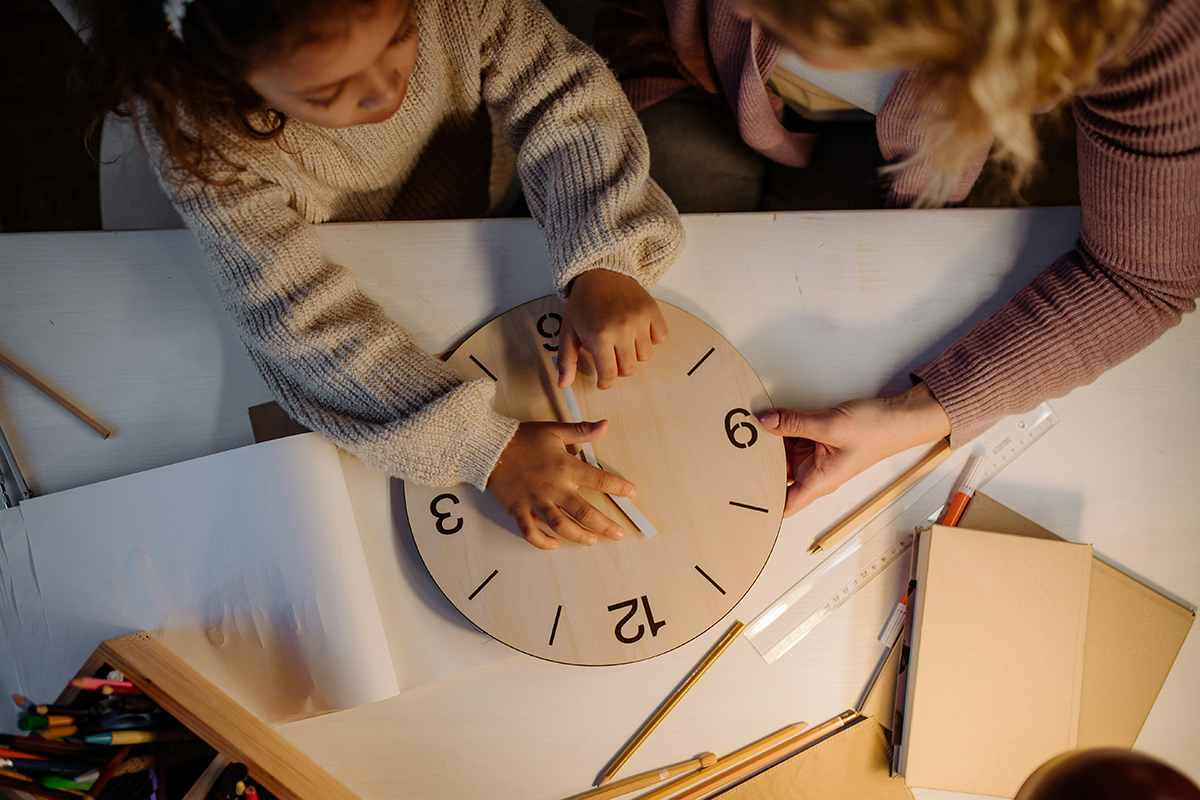Published November 1, 2025
You may have heard people talking about “falling back” this past weekend for Daylight Saving Time, but what does that mean exactly?
During the fall and winter, our clocks are set in what’s called “Standard Time.” But in the spring, many countries around the world, including the US, change their clocks and set them ahead (or “spring forward”) by one hour—so what used to be 9 am, for example, is now 10 am. This new time is called “Daylight Time.” Then, in the fall, everyone switches their clocks back (or “falls back”) by an hour to how they originally were, back to Standard Time—so 10 am is now set back to 9 am. This act of changing our clocks forward in the spring is called Daylight Saving Time, and it ends when we set our clocks backward by an hour in the fall.
So, Why Do We “Spring Forward” and “Fall Back”?
But, why do we change our clocks at all? It’s a great question, and it all has to do with having more sunlight during the day.
Benjamin Franklin was the first to invent the concept of Daylight Saving Time in 1784—he noticed that the sun rose earlier and set later during the summer and thought that everyone would have more hours in the day when the sun was still up if they set their clocks forward in time during the summer. Franklin believed that this change would help people save money on candles, since they wouldn’t need to burn as many after the sun set with this time change.
About 100 years later, a bug collector from New Zealand named George Vernon Hudson came up with the same idea—he personally wanted more daylight hours so that he could catch more bugs. Around the same time, a builder from the UK named William Willet also suggested Daylight Saving Time so that everyone could have more leisure time after work while the sun was still up. He suggested moving clocks forward by 20 minutes every Sunday in April and then setting them back by 20 minutes every Sunday in September—thankfully, we don’t do that!
It wasn’t until 1916, during World War I, when countries started formally adopting Daylight Saving Time as a way to conserve energy. Germany was the first to adopt it, followed shortly by the UK. The United States adopted Daylight Saving Time in 1918 but repealed it in 1919 after the war was over. When World War II broke out, the US reinstated Daylight Saving Time, but didn’t standardize when the country would change their clocks, so cities and states all had their own ways of practicing Daylight Saving Time—it could get pretty confusing, to say the least! Finally, in 1966, the US passed the Uniform Time Act, which set specific start and end dates for Daylight Saving Time across the country, as well as exactly when during the day the clocks would move forward or backward by one hour. Interestingly, under the Uniform Time Act, not every state has to follow Daylight Saving Time—in fact, Hawaii and most of Arizona don’t observe it and follow standard time all year.
Do We Still Need Daylight Saving Time?
Today, there are questions about whether Daylight Saving Time hurts more than it helps. The common arguments in favor of Daylight Saving Time are that it helps us conserve energy and that it supports everyone’s health to have more daylight hours. But new studies may show that the opposite is true. These days, lighting doesn’t use as much energy as it used to, and while there might be mental health benefits from having more daylight, researchers say that changing our circadian rhythms for Daylight Saving Time might cause sleep deprivation and other health risks, as well as potentially increase the number of car crashes right after the spring forward. Surveys even show that 55% of Americans experience tiredness after setting their clocks ahead for Daylight Saving Time.
If the US does get rid of Daylight Saving Time, the big question is what time we would permanently switch to—Standard Time or Daylight Time. Senators seem to prefer Daylight Time, having introduced the Sunshine Protection Act earlier this year, which would make Daylight Time the new, permanent time. However, scientific and medical experts seem to support Standard Time instead, arguing—among other things—that having exposure to light too close to going to bed can disturb sleep cycles.
Tips for Adjusting After Switching Your Clocks
In the meantime, we’ll still switch our clocks twice a year and our bodies will still need to figure out how to adapt each time we spring forward or fall back. While the good news is that it’s easier on our bodies to switch back to Standard Time, since we gain an hour of sleep, there are still some things you can do to help support your body’s circadian rhythm this fall:
- Make sure to adjust ALL your clocks back to Standard Time.
- Cellphones and computers usually switch automatically, but be sure to change any manual or digital clocks around the house.
- Try to plan your schedule so that your first few days back on Standard Time aren’t super busy, just in case you feel sleepy during the day.
- Have and follow a bedtime routine.
- Go to sleep at the same time on weekdays and weekends.
- Limit or avoid caffeine (and alcohol, for parents) in the afternoon and evening.
- Eat dinner at least a few hours before bedtime, and limit spicy and heavier foods at dinnertime.
- Avoid screens for at least 30 minutes before going to bed.
- Block out excess noise and light in your bedroom.
Hopefully, these tips will help make the time switch feel easier this week—and welcome back to Standard Time!
Tags: daylight saving, fall back